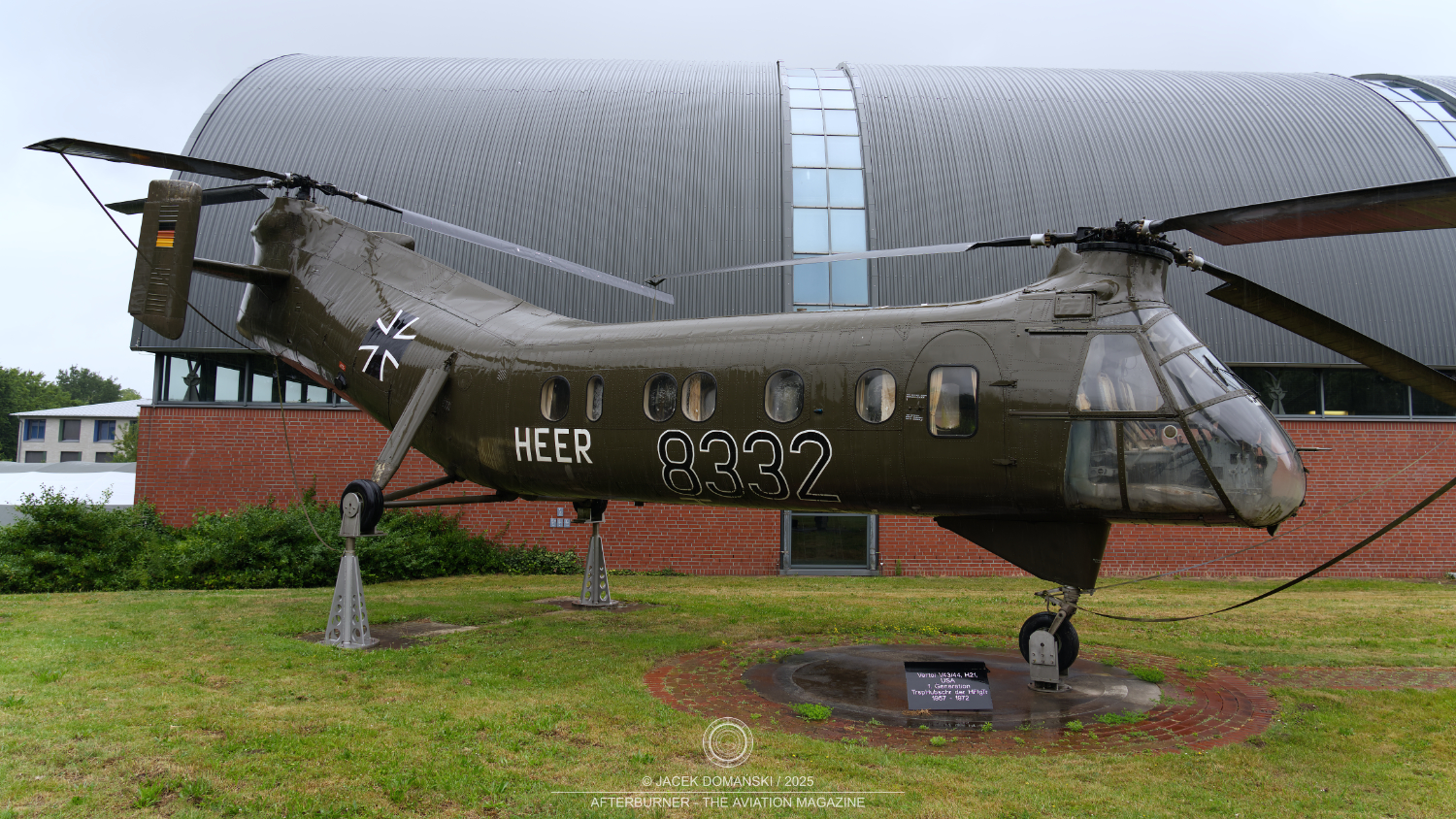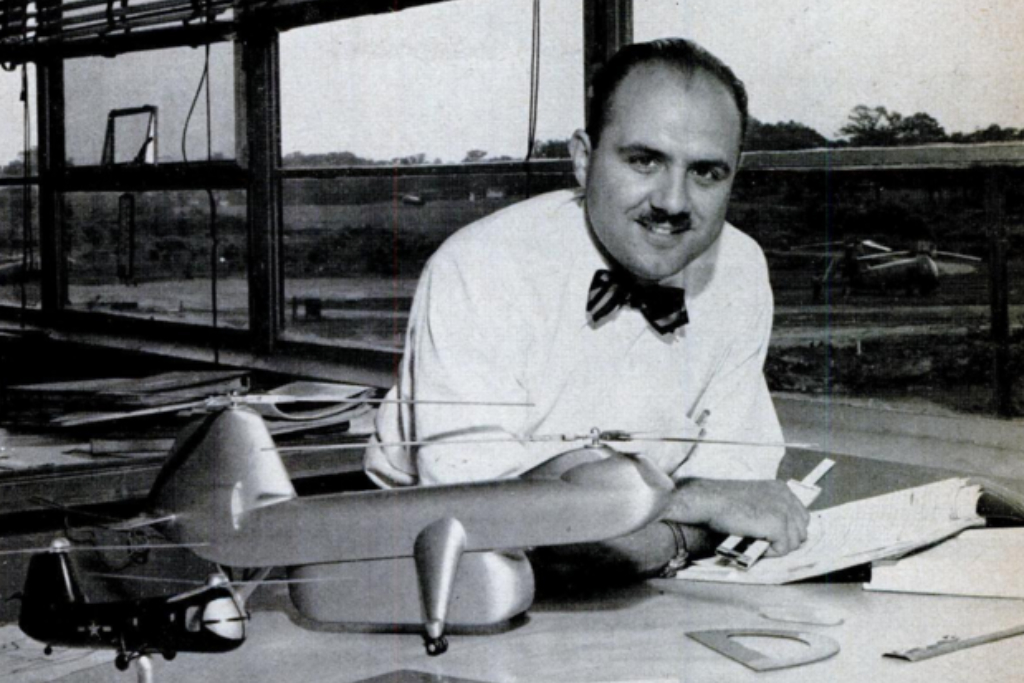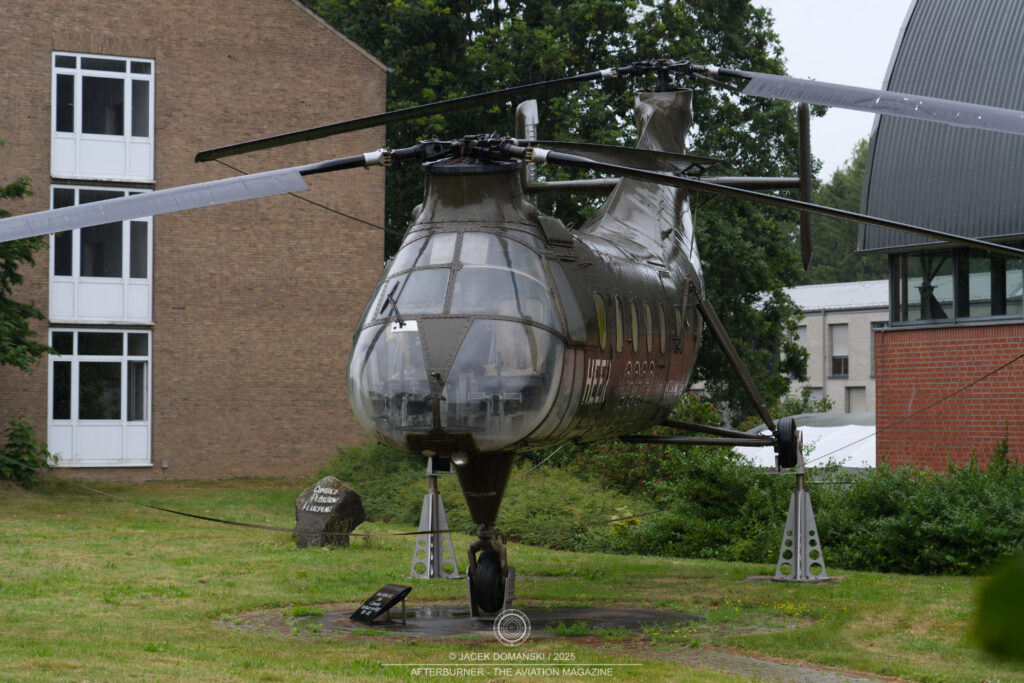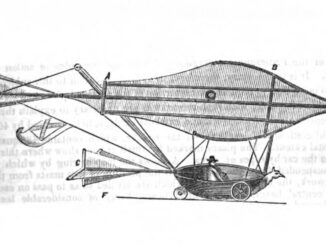 On 24 October 1919, Frank Nicholas Piasecki, an American engineer and pioneer of rotorcraft aviation, was born in Philadelphia, Pennsylvania.
On 24 October 1919, Frank Nicholas Piasecki, an American engineer and pioneer of rotorcraft aviation, was born in Philadelphia, Pennsylvania.
Piasecki, the son of Polish immigrants, began his engineering career at a young age. During his high school years, he worked in an autogyro workshop and later studied mechanical engineering at the University of Pennsylvania and New York University.
After completing his studies, Piasecki was hired by the Platt-LePage Aircraft Company, where he worked on rotorcraft projects. In 1940, together with his former classmate Harold Venzie, Piasecki founded the PV Engineering Forum (the name derived from the first letters of their surnames).
The first aircraft designed by the PV Engineering Forum was a tail-rotorless helicopter, known as the PV-1. In 1943, Piasecki completed work on his first rotorcraft, designated the PV-2. It was the third helicopter to fly in the United States and featured several technical innovations. The advanced design of the PV-2 attracted the attention of the US Navy, and shortly afterwards Piasecki was awarded a development contract. However, Harold Venzie left the company in the same year.
In January 1944, Piasecki started working on a series of helicopters for the US Navy. His efforts culminated in the first successful tandem-rotor design in the world. The rotorcraft, officially designated the PV-3 (XHRP-X by the US Navy) but commonly referred to as “The Dogship”, successfully performed its maiden flight on 7 March 1945.
Despite the success of the PV-3 prototype, the PV Engineering Forum faced financial difficulties. As a result, Piasecki sold a controlling interest of 51% of the company’s shares to Laurance Rockefeller and A. Felix du Pont Jr. In 1946, the company was reorganised and renamed the Piasecki Helicopter Corporation.
The following year, the PV-3 entered serial production as the HRP-1 Rescuer (or Harp). The rotorcraft was acquired by the US Navy, the US Marine Corps and the US Coast Guard. Due to its distinctive silhouette, it quickly earned a nickname of the ‘Flying Banana’.

In the subsequent years, Piasecki continued to refine his tandem-rotor design. His later developments included the upgraded, all-metal variant of the Rescuer, designated the HRP-2, and the PV-14/PV-18 utility helicopter. The latter entered production in 1949 and was purchased by both the US Navy and the US Army, receiving the military designations HUP-1 Retriever and H-25 Army Mule, respectively.
That same year, Piasecki began work on an all-metal derivative of the HRP-1 for the United States Air Force. The helicopter, designated the YH-21, performed its maiden flight on 11 April 1952 and was soon approved for serial production.
The helicopter, known as the H-21 Workhorse/Shawnee, was produced in more than 700 examples and used by military operators in the United States, Canada, France, Japan, Sweden, West Germany and Zaire.
Regrettably, the time when the H-21 entered the market was not successful for Frank Piasecki personally. In 1956, he lost the confidence of the company’s major shareholders and was forced to leave the enterprise he had founded. Soon afterwards, the Piasecki Helicopter Corporation was rebranded as Vertol.
After being ousted from the company, Piasecki established another enterprise, named Piasecki Aircraft Corporation. He rehired some of his former design team and continued to work on experimental rotorcraft for the military. Piasecki’s later developments included the PA-59 Airgeep, the PA-39 quad-rotor helicopter, the PA-97 Helistat and a series of innovative compound helicopters – the 16H-1 and the X-49.
Frank Piasecki passed away on 11 February 2008 at the age of 88.
His second company, Piasecki Aircraft Corporation, has survived to this day and is being managed by his sons. Its current projects include electrically powered helicopters and unmanned aerial systems.




